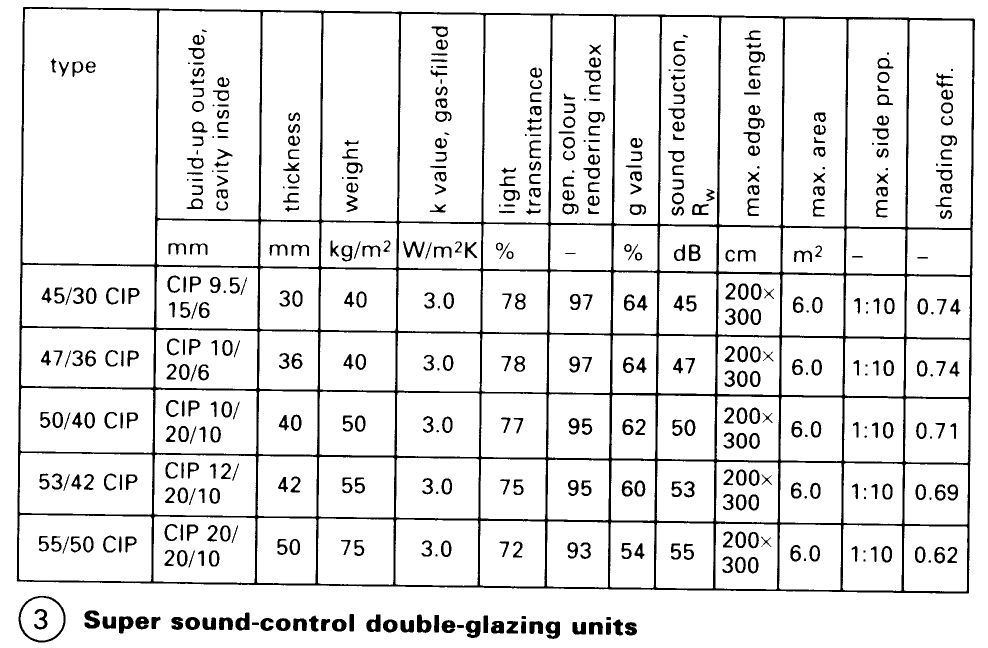Blast-resistant, Fire-resistant and Structural Glazing
Safety and anti-bandit glass can also be used to provide protection against bomb attack and blast. The glass performs in two ways. First, it repels any bomb which is thrown at it, causing it to bounce back at the attacker, and second, under the effects of a blast it will deform and crack, but the glass pieces remain attached, reducing the likelihood of flying splinters.
Bullet-resistant glass. For protection against gunshots, a build-up of multiple layers is required, the overall thickness (20-50 mm) depending on the classification required. This glass incorporates up to four layers of glass, some of different thicknesses, interlayered with PVB. When attacked, the outer layers on the side of the attack are broken by the bullet and absorb energy by becoming finely granulated.
The inner layers absorb the shock waves. A special reduced-spalling grade of glass can be used to minimise the danger of glass fragments flying off from the rear face of the glass. Even after an attack, barrier protection is maintained and visibility (apart from the impact area) is unaffected. Bullet-resistant classifications are based on the type of weapon and calibre used, e.g. handgun, rifle or shotgun.
Areas of use: banks; post offices; building societies; betting offices; wages and rent offices; cash desks; security vehicles; embassies; royal households; political and government buildings; airports; etc.
Fire-resistant glass. Fire resistance can be built up in two ways. One is a laminated combination of Georgian wired glass and float glass (or safety or security glass) with a PVB interlayer. The other way is to incorporate a transparent intumescent layer between the pre-stressed borsilicate glass sheets which, when heated, swells to form an opaque, fire-resistant barrier. Fire resistance of up to 2h can be achieved. It must be remembered that in any given situation, the performance of the glazing depends on adequate support during the 'period of stability' prior to collapse.
Areas of use: fire doors; partitions; staircase enclosures; rooflights and windows in hospitals; public buildings; schools; banks; computer centres; etc.
Structural glazing. There is an increasing demand for large, uninterrupted areas of glass on fagades and roofs, and it is now possible to use the structural properties of glass to support, suspend and stiffen large planar surfaces. Calculation of the required glass strengths, thicknesses, support systems and fittings to combat structural and wind stresses has become a very specialised area (consult the glass manufacturer). A wide variety of glass types may be used, e.g. toughened and laminated, single and double glazed, with solar control or with thermal recovery twin glass walls. Panels as large as 2m x 4.2m are possible.
These are attached at only four, six or eight points and can be glazed in any plane, enabling flush glazing to sweep up walls and slopes and over roofs in one continuous surface. Various systems have been used to create stunning architectural effects on prestigious buildings throughout the world, even in areas which are prone to earthquakes, typhoons and hurricanes. Dimensional tolerances tend to be very small. For example, in a project for an art gallery in Bristol, UK, a tolerance of ±2 mm across an entire frameless glass fagade 90m long and 9m high has been achieved. The 2.7 m x 1.7 m glass fagade panels are entirely supported on 600mm wide structural glass fins.
Sound-control glass – (1) – (3). Compared with monolithic glass of the same total thickness, all laminated glass specifications provide an increased degree of sound control and a more consistent acoustic performance. The multiple construction dampens the coincident effect found in window glass, thus offering better sound reduction at higher frequencies, where the human ear is particularly sensitive. The cast-in-place type of lamination is particularly effective in reducing sound transmittance.
Sealed multiple-glazed insulating units and double windows, particularly when combining thick float glass (up to a maximum of 25 mm) and thinner glass, effectively help to dampen sound.
Areas of use: windows and partitions in offices; public buildings; concert halls; etc.



Date added: 2023-01-01; views: 586;
